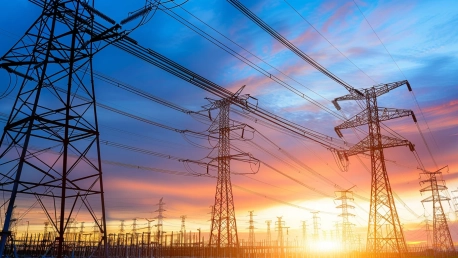A burgeoning issue in the United States looms as President Joe Biden’s climate agenda progresses, potentially destabilizing the nation’s energy infrastructure. At the heart of the debate is a North Dakota state assessment warning against the risks of new EPA regulations on greenhouse gas emissions, specifically targeting coal-powered plants. The outcomes forecasted include increased blackouts and a strained power grid unable to keep up with emerging energy demands.
The Impact of EPA’s Greenhouse Gas Rule on Energy Reliability
North Dakota’s Lignite-Based Power Generation Challenges
The concerns from North Dakota cast a worrying light on the EPA’s Greenhouse Gas Rule, as it puts the state’s lignite-based energy production at risk. Experts argue that meeting the stringent standards could prove beyond the capabilities of the current plants that form the backbone of North Dakota’s power supply. The potential fallout is crystal clear: the premature retirement of coal, alongside natural gas and nuclear facilities, could thrust the nation into an over-dependence on renewables. Such intermittent sources, despite their environmental appeal, are yet to demonstrate the capacity to consistently satisfy the nation’s energy appetite.
Economic Consequences and Capacity Shortfalls
The costs of transitioning away from fossil fuels to alternative energy resources could be staggering. Analysts project an additional financial burden of $381.9 billion by 2055 when compared to the maintenance of existing infrastructure. This monetary perspective is but one facet of the problem; there’s also the looming threat of capacity shortfalls. Expectations of an under-prepared grid flash red warning signals of widespread rolling blackouts. These power outages wouldn’t just be a temporary inconvenience; they would signify a systemic inability to meet consumer demands, potentially hindering economic growth and stability.
Experiences and Expert Perspectives
Strain on Current Grid Infrastructure
The warnings regarding grid inadequacies are not solely based on hypothetical analysis. Experiences from California during exceptional heat waves amplify the real-world implications. The state’s request for residents to conserve electricity and to hold off on charging electric vehicles paints a dire picture. It is a picture underscored by experts like Alex Epstein and institutions such as NERC, who concur that the current energy infrastructure is not equipped to handle the strain imposed by modern technologies and rising trends like artificial intelligence and electric vehicles.
The Balancing Act: Energy Demands vs. Climate Goals
As climate policies intensify, the discrepancy between supply and demand widens. Despite the growing concerns over grid stability and energy reliability, federal actions show an unwavering prioritization of environmental policies. The push towards electric vehicles is steadfast, even as the nation grapples with handling the sheer power those vehicles require. Such policies, while noble in their environmental goals, must be weighed against the stark reality of energy demands that continue to climb, accentuating the essential need for a balance between these contrasting priorities.
Policy Actions and Their Sectoral Implications
Federal Leases and Protected Areas
In a move underscoring the Biden administration’s commitment to the environment, new coal leases have been banned in Wyoming’s prolific Powder River Basin. Additionally, sweeping protections over vast territories in the western Arctic aim to curtail the expansion of fossil fuel extraction. These decisive actions, while imperative for environmental conservation, cast a shadow over energy independence and hint at the security concerns tied to a struggling domestic energy production sector.
Electric Vehicle Push and Supply Chain Vulnerability
The U.S. is facing a growing concern as President Biden advances his climate initiatives that could shake up the stability of the country’s energy system. Central to the discourse is a thorough analysis from North Dakota, which cautions about the possible repercussions of fresh EPA standards on carbon emissions, particularly those affecting coal-driven electricity stations. The state’s forecast points to a gloomy scenario: a spike in power outages and an overburdened electrical grid that may falter under the pressure of mounting energy needs. This assessment symbolizes a critical juncture, as it weighs the imperative of environmental reforms against the resilience and reliability of America’s power infrastructure. The administration’s pursuit of ecological transformation is setting the stage for a critical evaluation of how to balance progressive environmental policies with the assurance of consistent energy provision for the nation.









